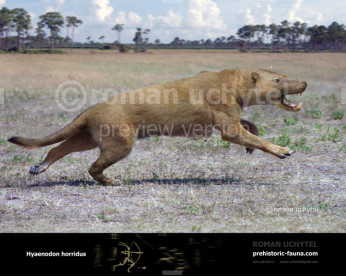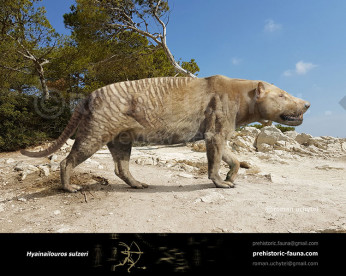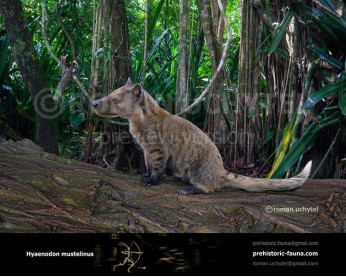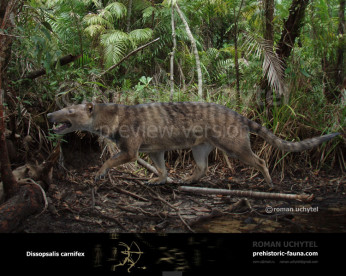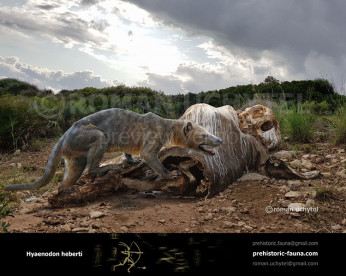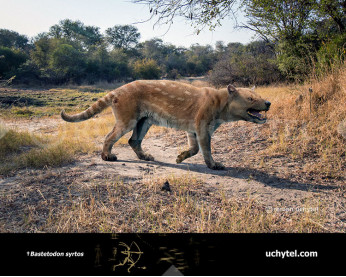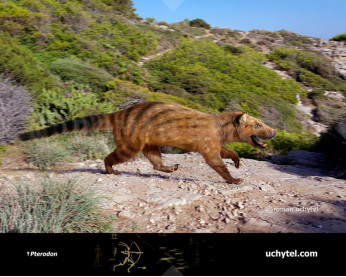Kerberos langebadreae
332332Kerberos langebadreae (†Kerberos Solé et al. 2015)
Parent taxon: Hyainailourini according to F. Solé et al. 2015
Sister taxa: Hyainailouros, Isohyaenodon, Leakitherium, Pterodon, Sivapterodon
Order: Creodonta
Family: †Hyaenodontidae
Time period: Around 40 million years old. (Eocene of France)
Size: Up to 2 meters long. 65 cm tall at the shoulder. Weight estimated at up to 135 kg.
An archaic form of flesh-eating mammal called a hyaenodont, and, more specifically, a member of a lineage called hyainailourines. Size estimates suggest K. langebadreae may have weighed up to 140 kg, revealing this species as the largest carnivorous mammal in Europe at that time. Besides its very large size, K. langebadreae possesses an interesting combination of primitive and derived features. The distinctive skull morphology of K. langebadreae reflects a powerful bite force. The postcranial elements, which are rarely associated with hyainailourine specimens, indicate an animal capable of a plantigrade stance and adapted for terrestrial locomotion.
Kerberos langebadreae (†Kerberos Solé et al. 2015)
Parent taxon: Hyainailourini according to F. Solé et al. 2015
Sister taxa: Hyainailouros, Isohyaenodon, Leakitherium, Pterodon, Sivapterodon
Order: Creodonta
Family: †Hyaenodontidae
Time period: Around 40 million years old. (Eocene of France)
Size: Up to 2 meters long. 65 cm tall at the shoulder. Weight estimated at up to 135 kg.
An archaic form of flesh-eating mammal called a hyaenodont, and, more specifically, a member of a lineage called hyainailourines. Size estimates suggest K. langebadreae may have weighed up to 140 kg, revealing this species as the largest carnivorous mammal in Europe at that time. Besides its very large size, K. langebadreae possesses an interesting combination of primitive and derived features. The distinctive skull morphology of K. langebadreae reflects a powerful bite force. The postcranial elements, which are rarely associated with hyainailourine specimens, indicate an animal capable of a plantigrade stance and adapted for terrestrial locomotion.

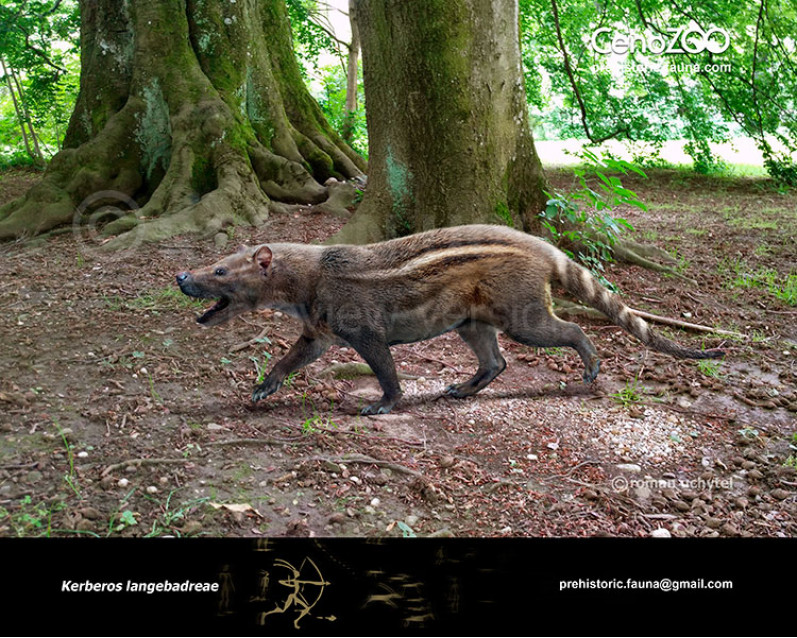
-797x638.jpg)
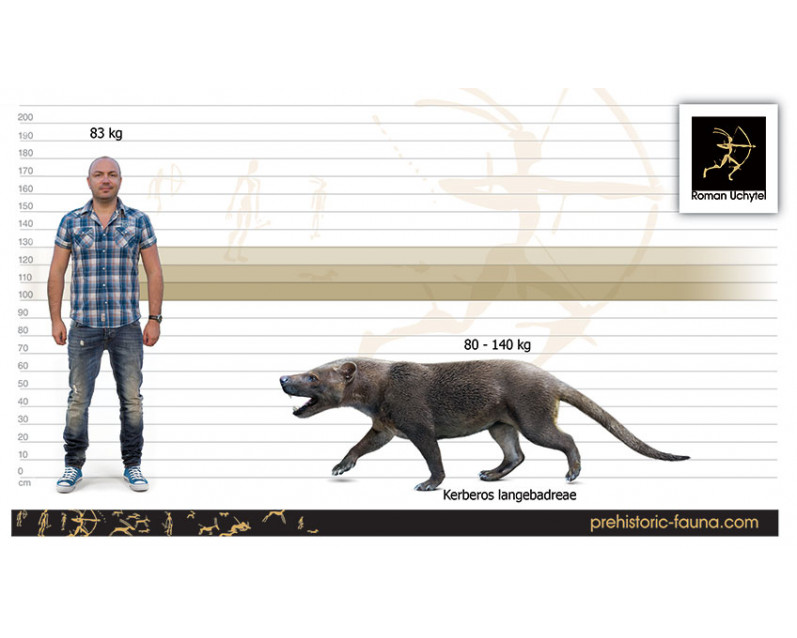

-70x56.jpg)

